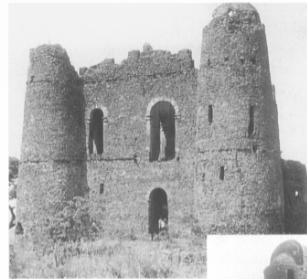African Architecture through changing economic, social, and other global factors
In many cases, Architecture's role in a culture or environment is usually transformed from just being a physical structure to reflecting a reality about the time period in which the Architecture was constructed. In many instances in history, buildings usually outlive people and even eras, therefore they are able to tell stories about the social, economic, or political conditions of their time period. This is no different for Gondar-Style Architecture. Not only does Gondar-Style Architecture tell the stories of the social conditions of East Africa during the 17th and 18th centuries, but it is also affected by the events that occurred during this time.
With the Gondar-Style Architecture during the 1500s, we are able to see how it reflects the monarchy and Solomonic kingship that transpired during the time. Gondar-Style structures are often castles or church-like buildings constructed with brown basalt and lime mortar with geographic locations that serve a purpose to the monarch who built it. An example of a Gondar-Style Architecture reflecting the socio-political conditions of its time period is the Guzara castle built between Tana and the red sea. This castle was built by Sertse Dingil in the late 1500s after he suddenly moved the center of his kingdom from Shewa to Lake Tana. By moving his castle to Lake Tana, he has better control of the trade routes and easier resource allocations.



Comments
Post a Comment